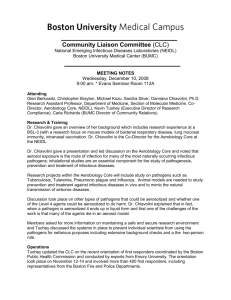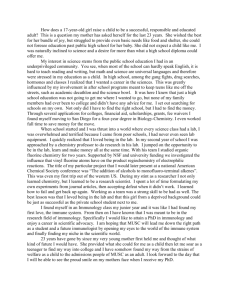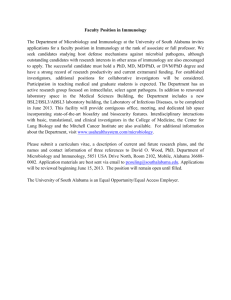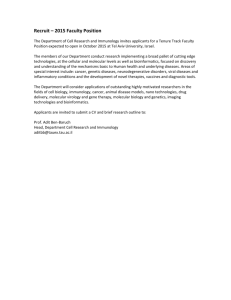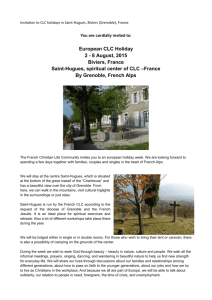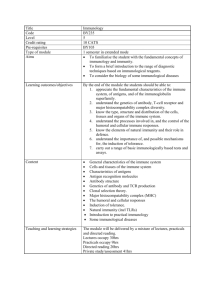Attending Glen Berkowitz, Michael Kozu, Ana Salas, Sandra Silver
advertisement
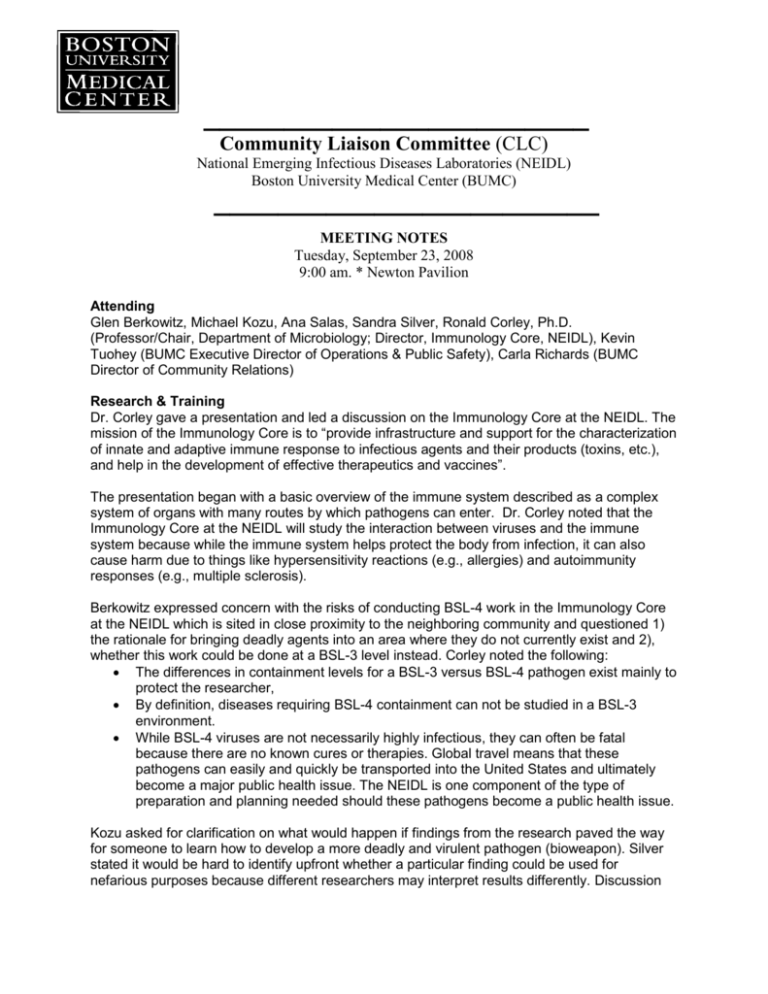
________________________ Community Liaison Committee (CLC) National Emerging Infectious Diseases Laboratories (NEIDL) Boston University Medical Center (BUMC) ________________________ MEETING NOTES Tuesday, September 23, 2008 9:00 am. * Newton Pavilion Attending Glen Berkowitz, Michael Kozu, Ana Salas, Sandra Silver, Ronald Corley, Ph.D. (Professor/Chair, Department of Microbiology; Director, Immunology Core, NEIDL), Kevin Tuohey (BUMC Executive Director of Operations & Public Safety), Carla Richards (BUMC Director of Community Relations) Research & Training Dr. Corley gave a presentation and led a discussion on the Immunology Core at the NEIDL. The mission of the Immunology Core is to “provide infrastructure and support for the characterization of innate and adaptive immune response to infectious agents and their products (toxins, etc.), and help in the development of effective therapeutics and vaccines”. The presentation began with a basic overview of the immune system described as a complex system of organs with many routes by which pathogens can enter. Dr. Corley noted that the Immunology Core at the NEIDL will study the interaction between viruses and the immune system because while the immune system helps protect the body from infection, it can also cause harm due to things like hypersensitivity reactions (e.g., allergies) and autoimmunity responses (e.g., multiple sclerosis). Berkowitz expressed concern with the risks of conducting BSL-4 work in the Immunology Core at the NEIDL which is sited in close proximity to the neighboring community and questioned 1) the rationale for bringing deadly agents into an area where they do not currently exist and 2), whether this work could be done at a BSL-3 level instead. Corley noted the following: The differences in containment levels for a BSL-3 versus BSL-4 pathogen exist mainly to protect the researcher, By definition, diseases requiring BSL-4 containment can not be studied in a BSL-3 environment. While BSL-4 viruses are not necessarily highly infectious, they can often be fatal because there are no known cures or therapies. Global travel means that these pathogens can easily and quickly be transported into the United States and ultimately become a major public health issue. The NEIDL is one component of the type of preparation and planning needed should these pathogens become a public health issue. Kozu asked for clarification on what would happen if findings from the research paved the way for someone to learn how to develop a more deadly and virulent pathogen (bioweapon). Silver stated it would be hard to identify upfront whether a particular finding could be used for nefarious purposes because different researchers may interpret results differently. Discussion ensued on dual use of research findings. Tuohey reminded members that, as always stated, Boston University Medical Center stands firmly behind its commitment that classified research or research on bioweapons will not take place at the NEIDL. Berkowitz wondered what Corley considered to be his biggest concerns with BSL-4 work at the NEIDL and Corley stated: safety to the investigator and the storage of pathogens. Corley added that he would not have agreed to serve as Director of the Immunology Core at the NEIDL if he did not believe the project could accomplish both successfully. Tuohey noted that the NEIDL has recruited top researchers and scientists and so the NEIDL now has the greatest concentration of researchers with BSL-4 experience in the country. Regulatory Affairs Tuohey provided an update on the NIH Blue Ribbon Panel and invited the CLC to attend the upcoming Blue Ribbon Panel meeting in Boston on Tuesday, October 14 at 6:30 (location-to-bedetermined). Operations Tuohey updated the CLC on the status of the Certificate of Occupancy from the City’s Inspectional Services Department and led discussion on the types of testing and training being proposed at the NEIDL. Members brainstormed recommendations for additional risk scenarios that might be useful to incorporate and replicate in simulated trainings (e.g., “mad scientist”). Berkowitz stated the community remains unclear about how they will be notified in the event of an accident or emergency situation with the NEIDL. Tuohey clarified that the authority to notify and/or evacuate the community in the event of an emergency rests with the City’s Public Health Commission. Kozu suggested the CLC invite officials from the Public Health Commission to attend an upcoming CLC meeting but Berkowiz questioned whether this was the most effective approach. Berkowitz urged BUMC to push for an answer from the BPHC which could be reported back to the CLC. 11:00 a.m. Meeting adjourned 2
